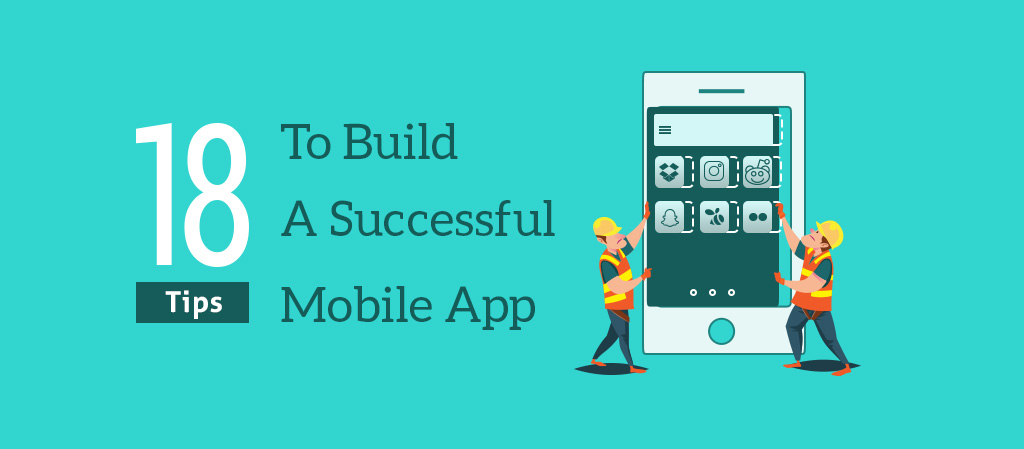
The phenomenal growth in mobile app usage has triggered a complementary growth in the growth of mobile apps. The sheer convenience of taking out your mobile phone and achieve your immediate task makes it a very strong value proposition.
Consider this: In 2017
- Mobile apps were downloaded more than 175 billion times.
- Mobile app users all over the world spent $ 86 billion on their favourite mobile apps.
- On an average, a user spent 1.5 months in a year using mobile apps.
- An average user accesses approximately 40 mobile apps every month.
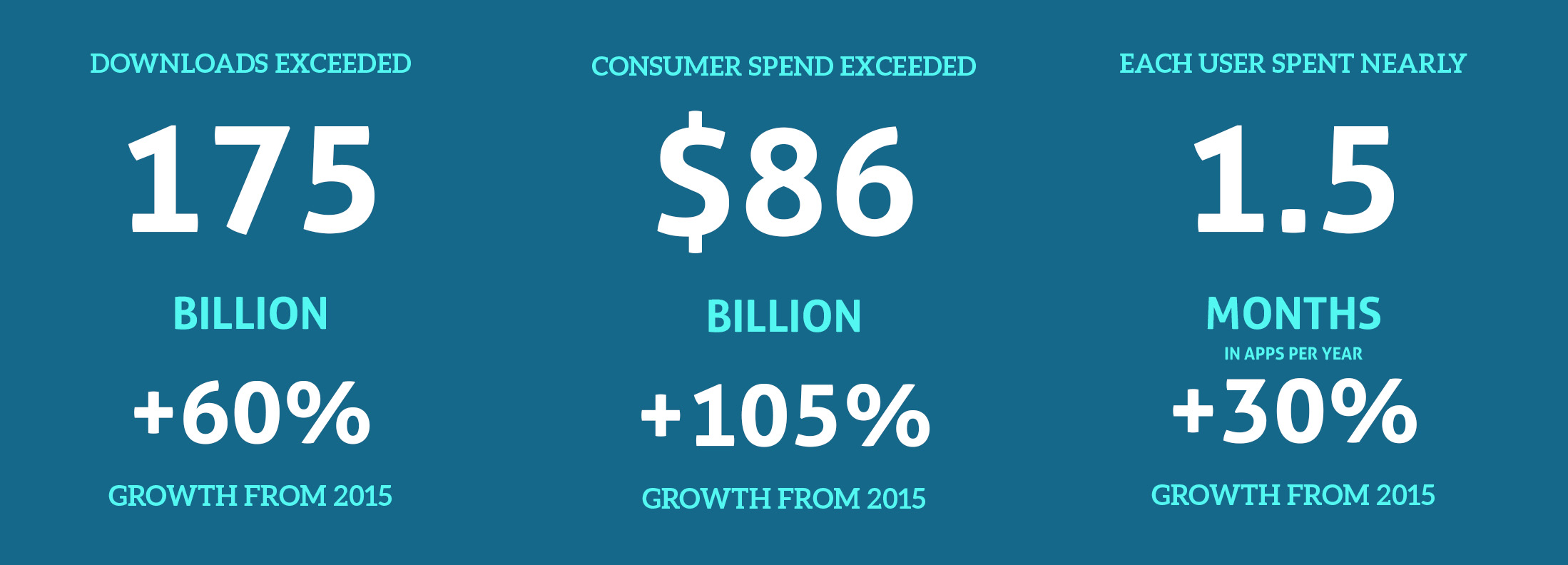
Source: 2017 Retrospective: A monumental year for the app economy
Accelerating your growth as a start-up with a mobile app
66% of the world population (the part of the population that is connected to the web) interacts with the Internet through smartphones. If you have a website there is a great chance that a majority of your visitors come to your website from their mobile phones.
If you have a website to do business with your customers and clients, then it makes perfect sense to also have a mobile app.
It goes without saying that if you are a start-up promoting a new mobile app then obviously you need to build one.
As a start-up, your near-future success depends on how many people you can reach, and having a mobile app is one of the best ways of reaching out to your target audience.
Through your mobile app, you don’t just make it easier for your customers and clients to do business with you, you are also able to send them timely notifications (try not to overdo) to engage them on a regular basis.
For example the growth of Airbnb. It was an idea conceived by two friends to share their rented space with others for just bed-and-breakfast. The service functions primarily through its mobile app. It was started in 2008 and by 2017 it was being used in 190 countries and had 4 million listings worldwide. The simplicity of the app was a factor behind the monumental success. The moment you need a place to crash for a few hours or for a couple of days just taps at a few places in the app and you are done.
If you want to build a successful app you need to take care of all the aspects associated with the ecosystem. It isn’t just about building the app and then releasing it for all and sundry.
In this blog post, we will study 18 tips that can help you build a successful mobile app.
Tip 01: Find out why users will want to use your mobile app?
Every successful mobile app fulfills a need. This need might be pre-existing and people might already be looking for a solution, or people might not be aware of the need. So, either you fulfill the need, or you make people aware of the need for your app.
For example, before WhatsApp and Instagram, people didn’t know that they had a strong need to share pictures. Once the apps went mainstream, they became among the most widely used apps in the world.
Of course, a mobile app isn’t just about sharing images. Take for example the Slack app: people like to collaborate with their colleagues even when on the go. They don’t want to miss out on the latest updates and work-related conversations and even online meetings. Hence, pretty much everyone who uses Slack on the website also uses it through a mobile app.
On-the-spot buying is possible only through mobile apps. This is why online retailers like Amazon.com aggressively promote their mobile apps and give their mobile app users preference over their website users in terms of offering discounts and latest offers.
So, before you start working on your mobile app, study your user base. Try to find out why people would want to use your app or, will they have a strong reason to use it?
Solve a pressing problem and solve it in a manner no other mobile app solves it. It is also called your mobile app’s value proposition.
Tip 02: Find out what is going to be the primary user flow through your mobile app
User flow is the number of steps a user needs to take and a sequence of steps a user needs to follow to achieve the objective of your mobile app. It’s also called the user journey.
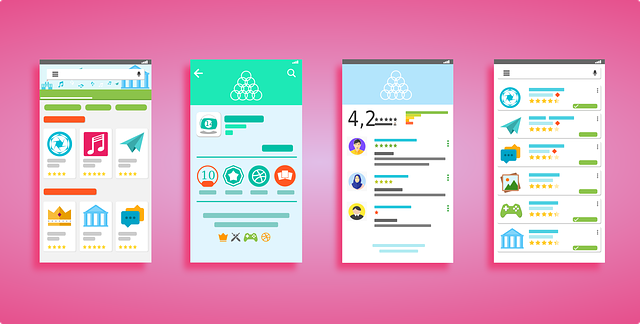
It’s not about too many steps or too few steps, it’s about maximizing or optimizing the experience. For example, the Amazon.com mobile app tries to minimize the number of taps needed to purchase a product. Even a single extra step may end up distracting the customer and stop him or her from purchasing.
Similarly, it’s very easy to post pics and videos on Instagram. If it were a difficult procedure, only geeks would use it and the app would have never experienced such a meteoric rise.
Eliminate all the unnecessary steps. Only keep what’s needed, and then, eliminate a couple more.
Tip 03: Build distributed feature flags
Feature flags (also called feature toggles) are the ability of your app to use (or stop using) certain features without you having to change the basic code of your app. It’s basically a mechanism that decouples feature deployment from new feature releases and gives you full control over which feature to turn on or off without impacting the overall app.
How does this help?
One, it modularizes your app development process – a complex feature can be worked upon by a small part of your team while the rest of the team goes ahead with the main development process. When that particular complex feature is ready to be tested or used, its presence within your app can be simply “toggled” on. If it works well, good, if it doesn’t, all you have to do is, “toggle” it off. This can be done even if your app is being used by your users in real-time.
Two, your users will appreciate the fact that new features become available to them without them having to go through the usual app upgrade process. You can bypass the app store and give new features and improve existing features directly.
Tip 04: Keep the most essential features for the first version
It doesn’t make sense to launch a mega-app in the first version itself unless you are a multibillion-dollar company.
It doesn’t mean launch a half-baked app.
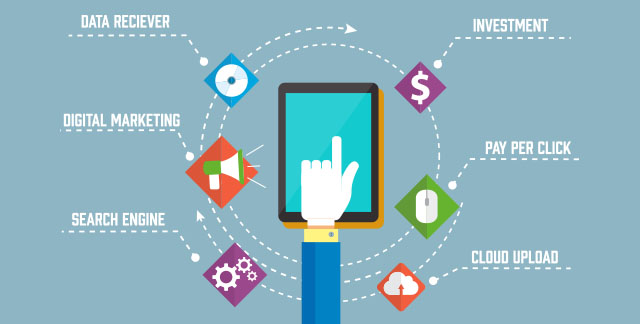
You may have great plans for your app – for example, Facebook Messenger, instead of acting merely as an Instant Messenger, is now evolving into a complete ecosystem where people are meant to be inside the messenger all the time and carry out all the other activities from within the messenger – this might not be had been the initial plan of the developers.
Launching a barebones mobile app will give you an idea of whether people are open to your app or not or whether it is solving an important problem or not. Also, most of the feature ideas may come from your users and this will enable you to focus on the needed features rather than doing the guesswork.
Tip 05: Deliver real value
Take for example an app like Todoist. Or even Asana. Or for that matter Sing! from Smule. They deliver exactly what people need. People who want to manage their tasks these days cannot do without Todoist (or any other app in the same category). Asana is used for project management and online collaboration. People who love to sing, especially duets, find the Sing! app indispensable. These apps deliver real value.
Tip 06: Choose the right tech stack for your long-term development and maintenance needs
Although you can change your programming and design environment as and when you like, it is often expensive and time-consuming to switch the technology later.
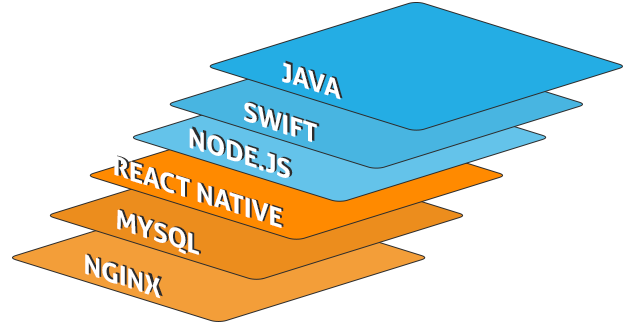
Your tech stack is the group of programming languages, server environment, databases and interface design tools that you use to design and build your mobile app.
Tip 07: Keep your app simple
Simplicity is the ultimate sophistication.-Leonardo da Vinci
If your app has too many steps before the ultimate objective of using the app can be achieved, by the time people follow all the steps, they may lose focus or interest. All popular mobile apps are very simple to use. The primary task of the app should be achievable within a couple of taps.
Take for example Facebook or Twitter apps. If you want to read your feed, you don’t even have to do anything. Just tap the icon of your app in the feed is right in front of you. Even if you want to post something, you can start doing it right away.
The interface of your mobile app should be so simple that people should be able to use it without thinking.
Tip 08: Build your app for multiple platforms
Different people like to use different mobile phones with different operating systems. There are fanatical iOS users. There is a very large Android user base. People have gradually started using the Windows phones. These are all different platforms and you cannot run an app built for one platform on another platform.
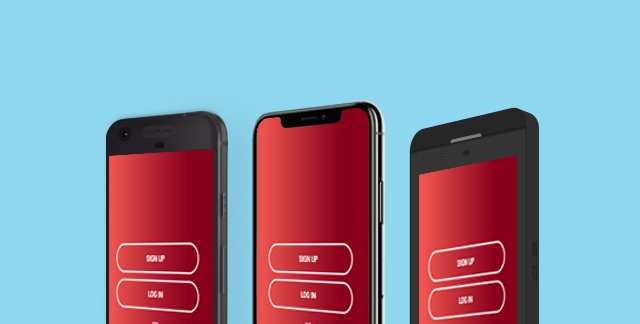
It is same as you cannot use a Windows software application in MacOS or Ubuntu, and vice versa.
If you want to reach a wider audience you must build your mobile app more than one platform.
Which platform should you give priority to? Depends on your user base and where people are more likely to start using your app as early as possible. If you have the budget and the team you can aim for releasing your mobile app for multiple platforms but if you need to make a choice you need to consider:
- The features possible in a platform
- Timeline – one platform may take longer than the other
- Audience – the users of some platform are sometimes not inclined towards using particular apps available in another platform
- Budget
- Revenue model
Sometimes businesses may decide to target one platform and totally ignore the other platform because their audience may not be inclined towards using their services. For example, the famous Moleskin notebook company has a mobile app called Timepage for iOS but not for Android because Apple users are eager to pay a premium for overall user experience which Android users may not be.
Tip 09: Test your mobile app on real devices with real people before release
There is a concept called “curse of knowledge”.
When you have been working on your mobile app for months, you know it inside out. Also, you are emotionally attached to it even if you don’t realize it. This will make you overlook many flaws in your mobile app.
Once you believe that your app is ready for beta testing – it is complete and ready to be launched – you let those people use your apps who haven’t been involved with the app development process.
They will commit mistakes that normal people would. They will be able to use your app in the environments that are not available in your working space. They will be subjecting your app to various customization preferences that only they can subject. They may even try to combine your app with a slew of other apps you have no idea of.
Tip 10: Provide off-line functionality
Off-line functionality means people are able to use your app, or at least the basic functions of your app even when there is no Internet connection.
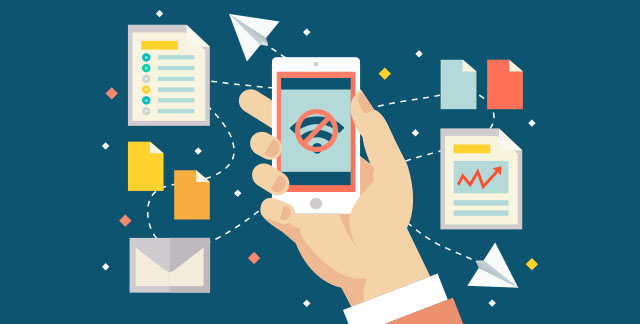
Take for example Google Docs. Although it is an online collaboration suite based on the premise that you need to be connected all the time, you can also work in off-line mode. In this mode, all the changes that you make to your documents and spreadsheets are saved locally and then as soon as you have the Internet connection they are synced with the Cloud.
The same goes for Gmail. If you have the feature activated, you can use Gmail in off-line mode. You can reply to all the messages on your phone and their drafts are locally saved and sometimes you don’t even realize it. Then, when you have the Internet connection, the regular service resumes.
Almost all media streaming services like Netflix and YouTube allow you to download and save content on your device so that you can enjoy your favorite shows without the Internet connection.
Tip 11: Have a well-defined marketing strategy
Whenever there is competition, there is a need for marketing. Marketing means highlighting your brand in front of people who have a use for your app or may have a use for your app in near future.
You can go for paid advertising or you can have a prolonged engagement strategy using email marketing, your blog, other niche blogs, niche forums, SEO, listing optimization in the app store, contests and events, awareness campaigns and social media marketing.
If you already have a renowned brand getting users for your app might not be that great a problem, but if you have a lesser-known brand, you should start working on your presence even before you have started working on app development.
For example, if you are planning to launch a financial accounting app, you should start engaging your target users well in advance, even six months-one year before the launch of the app. Become active in financial accounting forums. Be an advocate of your app idea. Start writing blog posts on the benefits of using a mobile app for financial accounting. Write authoritative articles on the subject. Start a mailing list of people who would be interested in using a financial accounting app. Start engaging people on social media about the benefits of using a financial accounting app.
Sending relevant notifications to your users is also a good way of keeping them engaged. Just don’t overdo it and send notifications only when it’s absolutely necessary.
Anyway, marketing is altogether another topic, but the success of your mobile app depends a lot on your marketing strategy, so, do draw one carefully, and if possible, with professional help.
Tip 12: Give your users a personalised experience
A mobile phone is highly personal, you can call it a private place for an individual, especially considering the fact that most of the people use lock screen that requires authentication before the mobile phone can be accessed.

People like to personalize. If there is a background, people like to have their own background. For example, in WhatsApp, you can change the background of your conversations and you can also use one of the photos in your photo albums as a background image. Some people like to use their own themes and they find it frustrating if the theme’s feature cannot be implemented on your app. The more personalization features you provide, the more comfortable people will feel using your app.
Tip 13: Offer a free version of your app
This is perhaps the best way of developing your user base as quickly as possible. Every major premium app was either free initially, or the basic functions of the app are still freely available.
Offering your app free of cost (or the basic version of your app) makes it easier for people to install your app and try it out. Nobody wants to buy an app without playing around with it for a while and making sure whether he or she actually has a use for the app or not.
Giving away your app for free will also give you enough time (before you launch the premium version) to gather feedback from your users and then make the needed changes.
Free app increases your user base faster and it also encourages and enables your existing users to recommend your app to friends and colleagues because they are not offering their friends and colleagues something for which they will have to shell out money.
Later on, you can introduce some features for which your users have to pay. For example, all the Zoho apps are free but when you start using them extensively, you have to upgrade. People easily upgrade because by then they have gotten hooked on the app that they are using and they have also experienced its benefits in real-world situations.
Tip 14: Track and take care of all exceptions and errors
Some runtime errors and exceptions may happen simply because the environment within the mobile device where your app is being used is not equipped enough. Suppose your app tries to use memory that is not available. Suppose it is going to use a feature like a gyroscope and assumes that the feature is going to be available on the mobile device, but it is not, and an exception error is caused.

When such errors happen the app is closed and the user is returned to the operating system environment, losing all the data.
Such undetected exceptions and errors can cause great problems and pose hurdles in the way of your mobile app becoming successful.
One, it may get your mobile app rejected by the app store company. If these exceptions and errors happen while your app is being reviewed by the App Store or the Google Play team, they will reject it.
Two, your users will stop using your app or will lose interest if it crashes repeatedly, without even telling you.
Tip 15: Get feedback and respond to feedback promptly
You will be getting feedback from the app store’s comments section itself whether it is Apple’s App Store or Google’s Google Play. You can also allow people to give you feedback from your website, from a phone, from email and even through social media channels like Twitter, LinkedIn, Facebook and Instagram.
Getting feedback is important because it will tell you how people are reacting to different features (or a lack of them) in your app. Feedback will help you incorporate further changes in your app.
Promptly responding to feedback is a very good engagement strategy. When someone leaves a comment or contacts you, he or she is showing some sort of interest in your app even if the feedback is negative. Promptly responding to the feedback will tell people that you are actively engaging your target user base and you are interested in improving your app.
Tip 16: Maintain high performance

High performance means your app must function flawlessly without any lag time, without crashing and without a confusing navigation system. The overall experience for your user must be rewarding when he or she uses your app.
Even if there are some bugs, fixes must be released as soon as possible.
Studies have shown that 80% of your users may abandon your app if they are not satisfied with its performance within 2-3 attempts. This is primarily because there might be 10-15 alternatives already available in the app store and your users will quickly move on. This is why it is very important that you get everything right on the first attempt because once your users have a bad experience it will be very difficult to convince them into trying out your app again.
Tip 17: Upgrade your app regularly
Whether it’s design, user experience or features, keep upgrading your app.
The mobile phone technology is constantly improving so your mobile app should be able to leverage the latest technology. Features are also a great way to keep your users interested in your app. New features are always intriguing.
Regularly upgrading your app maintains a positive buzz around it. People have something to talk about. Bloggers have something to write about. You will have new conversations in online forums. People will share their feedback about the recent upgrades on their social media profiles.
Tip 18: Use in-app analytics for improving your app
In-app analytics will give you the insights and feedback that your users may not give directly. Analytics will help you gather and analyze KPIs (Key performance indicators) and give you an idea of user behavior when people interact with your app.
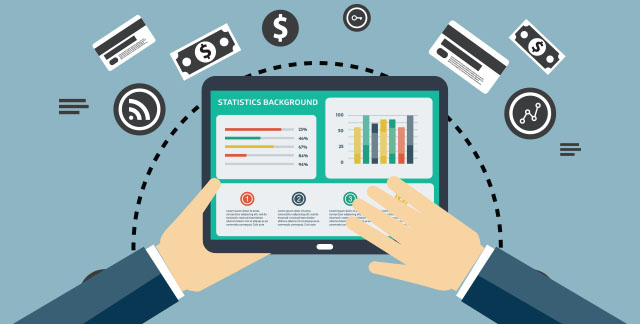
Metrics like how many people download and install your app and how many people uninstall it with and how many days people use your app can be easily obtained from the dashboard of your app store, but there are many insights that can be obtained from in-app analytics such as which functions people use the most, what is the path followed by your users before achieving the main objective of the app, which bit of information people interact the moment they launch the app and for how long people use your app every day or, for how long they use the individual feature of your app.
The number of analytics metrics that you can obtain is only limited by what you want to gather. You will also know which feature people use and which feature they don’t use and then accordingly can make changes to your app.
A word of caution though: never collect information without informing the user. Only collect analytics data your user has agreed to share with you. The recent GDPR in Europe and equivalent legislation coming up in various countries have stringent provisions against technology companies acquiring data without user’s knowledge.
Conclusion
To be frank, developing your mobile app is just a small phase of your journey towards creating a successful mobile app. In the above-listed sections we have seen that to create a successful mobile app you need to take care of the following:
- Clearly define the value proposition of your mobile app
- Finalise the primary user flow through your mobile app
- Launch the first version with the most essential features, keeping it as lean as possible
- Choose the right tech stack
- Build distributed feature flags
- Cover as many mobile platforms as possible
- Allow people to use your mobile app without Internet connection
- Allow your users to have a personalised experience with your app
- Deliver real value
- Keep the experience simple
- Test your app with regular folks (not related to your development team) on different mobile phones
- Have a strategy on how to handle exceptions and errors
- Ensure that your mobile app works smoothly and performs well
- Have a well-define marketing strategy in place
- Offer a free version of your mobile app
- Respond to feedback quickly whether it is positive feedback or negative feedback
- Keep your mobile app fresh with regular updates
- Leverage in-app analytics to improve your app but make sure your users know what data you are gathering
As you have seen, merely developing an app doesn’t ensure its success. It’s a collection of myriad activities and sustained campaigns that turn your app into a great success. We’d love to know your thoughts on the same. Let us know in comments below.
Dhananjay (DJ) Goel is the CTO at Alphalogic, passionate about technology, startups, game of thrones and coffee. He enjoys working on challenging problems with innovative startups.
